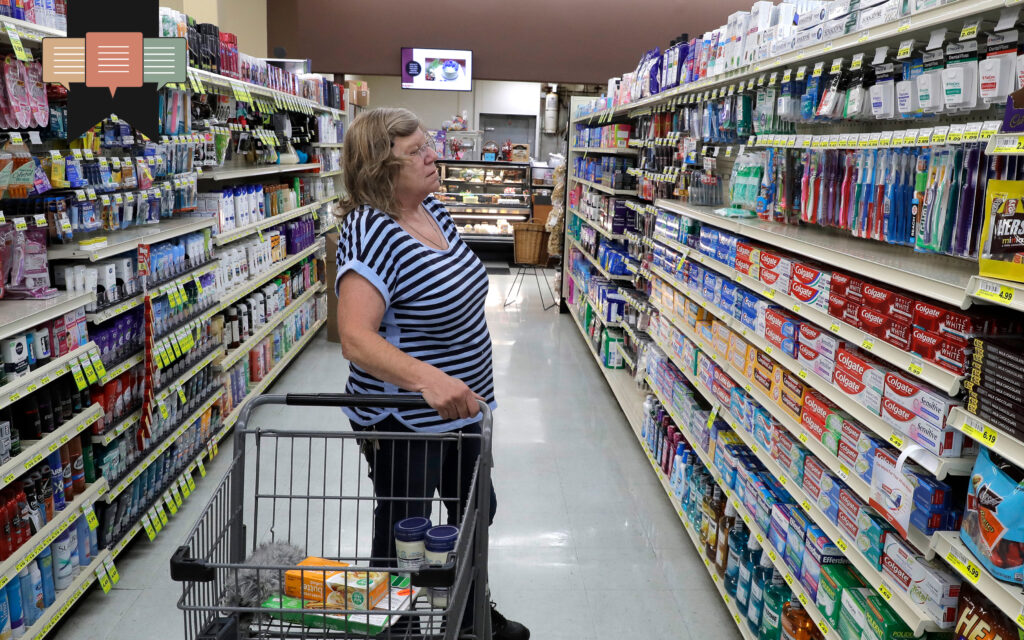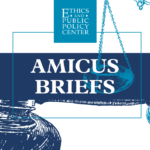
Published April 9, 2024
Have you noticed that the last carton of ice cream you bought was suspiciously undersized? Well, Joe Biden has, and he’s not taking it lying down. During the State of the Union address, Biden raised the issue of so-called “shrinkflation” to national prominence, saying that it was time to hold companies accountable for hiding price increases under the cloak of decreased packaging sizes. Biden’s SOTU call-out of shrinking Snickers bars followed a recent New York Times story on the subject and a “Shrinkflation Prevention Act” introduced by Sen. Bob Casey (D-Pa).
It would be easy to dismiss all this as political theater. Doesn’t the nation have bigger problems to solve than smaller potato chip bags? It’s also a bit rich for politicians who helped fuel the biggest inflation spike of our generation to start pointing the finger at companies who are just trying to protect their bottom line. All this is true, and yet the debate over “shrinkflation” offers an important case study in the proper interaction of the “free” market and government regulation. Truthfulness matters, and the law should penalize dishonesty—but without becoming a nanny state.
Although newly prominent perhaps, “shrinkflation” is nothing new. Probably for as long as inflation has been a regular feature of modern economies, companies have regularly sought to mask its impact on prices by reducing packaging sizes while keeping prices the same. The strategy is by now well-established: When profit margins get too thin on a standard-sized product, reduce the packaging by 10 or 20 percent, while keeping the price the same; then, once it’s time to do this again, reintroduce the old standard size under the label “Family size—40% larger!” for an increased price; finally, re-label the “family size” product as the regular product, and repeat the process.
Is there anything wrong with this? Many of us are apt to shrug our shoulders and treat it as another instance of the free market doing its thing. Others, however, find it outrageous, and they aren’t wrong to think there is something fundamentally dishonest about pretending you haven’t raised prices when you actually have—a dishonesty we would hardly tolerate in other areas of life. Companies might retort that there’s no deception, since the size is right there on the label, but of course they would never go to the trouble of resizing their products if they didn’t think that many consumers would be fooled, at least for awhile.
Rather than “the free market doing its thing,” such sneaky behavior actually undercuts (albeit in a mild form) one of the essential prerequisites of a free market: symmetric information. It’s not hard to see why, for according to classical economics, the goal of a free market is to enable all goods and services to trade at the optimal “equilibrium price,” at which the relative benefits to both buyer and seller are equalized. And this only works if both parties know exactly what it is they are buying or selling: If one art dealer knows a painting is a fake, while another thinks it’s real, the former may be able to rip off the latter with a price well above what both would agree to if they had the same information.
This is why one of the chief tasks of lawmakers throughout all ages has been maintaining just weights and measures, a task highlighted in the law of God (Deuteronomy 25:14). And the underlying principle extends to broader regulations requiring manufacturers and retailers to tell the truth, as fully as possible, about what exactly is in their product.
Our modern food labeling laws originate from the Pure Food and Drug Act of 1906, which responded to a crisis of dishonesty in the early days of mass consumer products, as many “medicines” were little better than snake oil, and many foods laced with addictive or dangerous substances. Such requirements have expanded to include the “Nutrition Facts” and ingredients on food labels, as well as requirements in many states for grocery stores to include unit-cost pricing on their labels (albeit usually in small print) so consumers don’t have to do the math on which product is actually cheaper.
In principle, such regulations actually support rather undermine the free market, by enabling buyers and sellers to meet on a more equal footing. However, there can be too much of a good thing. Many food-labeling crusades have proven to be misguided, as lawmakers helped fuel unscientific nutrition fads by requiring labels to highlight supposedly unhealthy substances like saturated fats. Moreover, like all “nanny-state” initiatives, such regulations can tend to make consumers more ripe for exploitation in the long haul.
The best way to ensure a free market is to maintain a society of well-educated, self-reliant consumers, not buyers who outsource basic arithmetic to government bureaucrats. If consumers are genuinely being deceived, there may be some need for lawmakers to step in and demand greater transparency, but we should always be careful before asking government to do what we can easily do ourselves. Read the label.
Brad Littlejohn, Ph.D., is a Fellow in EPPC’s Evangelicals in Civic Life Program, where his work focuses on helping public leaders understand the intellectual and historical foundations of our current breakdown of public trust, social cohesion, and sound governance. His research investigates shifting understandings of the nature of freedom and authority, and how a more full-orbed conception of freedom, rooted in the Christian tradition, can inform policy that respects both the dignity of the individual and the urgency of the common good. He also serves as President of the Davenant Institute.











